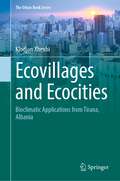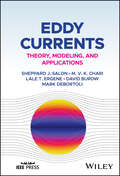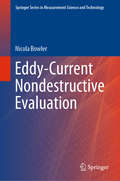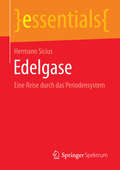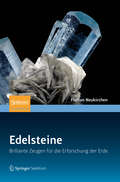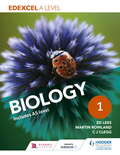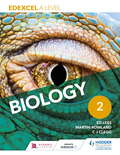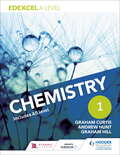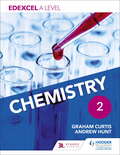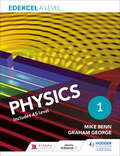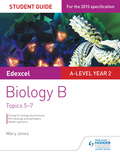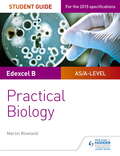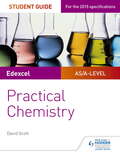- Table View
- List View
Ecovillage at Ithaca
by Liz WalkerA founding member describes the growth and development of the EcoVillage at Ithaca.
Ecovillages and Ecocities: Bioclimatic Applications from Tirana, Albania (The Urban Book Series)
by Klodjan XhexhiEcological and livable cities need an objective method to be examined. This book is in search of a method to determine the level of livability, ecology and energy efficiency. Ecological and sustainable cities need to properly make up for the existent weakness of the city's construction under fine ecological environment. The intention of this comparative study is an attempt to improve life quality in Tirana, Albania. It gives examples of successful strategies, e.g. bioclimatic solution through passive solar systems and the use of underground tunnels. This book is aimed at researches, professionals, architects and city planners.
Eddy Currents: Theory, Modeling, and Applications
by Sheppard J. Salon M. V. Chari David Burow Mark DeBortoli Lale T. ErgeneEDDY CURRENTS Understand the theory of eddy currents with this essential reference Eddy currents are electrical current loops produced when a conductor passes through a magnetic field, or is otherwise subject to a change in magnetic field direction. These currents play a significant role in many industrial processes and areas of electrical engineering. Their properties and applications are therefore a subject of significant interest for electrical engineers and other professionals. Eddy Currents: Theory, Modeling and Applications offers a comprehensive reference on eddy currents in theory and practice. It begins with an introduction to the underlying theory of eddy currents, before proceeding to both closed-form and numerical solutions, and finally describing current and future applications. The result is an essential tool for anyone whose work requires an understanding of these ubiquitous currents. Eddy Currents readers will also find: Professional insights from an author team with decades of combined experience in research and industry Detailed treatment of methods including finite difference, finite element, and integral equation techniques Over 100 computer-generated figures to illustrate key points Eddy Currents is a must-have reference for researchers and industry professionals in electrical engineering and related fields.
Eddy-Current Nondestructive Evaluation (Springer Series in Measurement Science and Technology)
by Nicola BowlerThis book covers the topic of eddy current nondestructive evaluation, the most commonly practiced method of electromagnetic nondestructive evaluation (NDE). It emphasizes a clear presentation of the concepts, laws and relationships of electricity and magnetism upon which eddy current inspection methods are founded. The chapters include material on signals obtained using many common eddy current probe types in various testing environments. Introductory mathematical and physical concepts in electromagnetism are introduced in sufficient detail and summarized in the Appendices for easy reference. Worked examples and simple calculations that can be done by hand are distributed throughout the text. These and more complex end-of-chapter examples and assignments are designed to impart a working knowledge of the connection between electromagnetic theory and the practical measurements described. The book is intended to equip readers with sufficient knowledge to optimize routine eddy current NDE inspections, or design new ones. It is useful for graduate engineers and scientists seeking a deeper understanding of electromagnetic methods of NDE than can be found in a guide for practitioners.
Edelgase: Eine Reise durch das Periodensystem (essentials)
by Hermann SiciusHermann Sicius bringt dem Leser in knapper Form alle wichtigen Informationen rund um die Edelgase nahe. Die sechs bekannten Mitglieder dieser achten Hauptgruppe, von Helium bis Radon, sind bei Raumtemperatur allesamt gasförmig, nur über den möglichen Aggregatzustand des künstlich erzeugten Ununoctiums wird noch diskutiert. Das bekannteste Einsatzgebiet für alle Edelgase mit Ausnahme des Radons ist das als Füllgas in Gasentladungslampen und speziell des Heliums als Füllgas für Ballons. Aber was gibt es darüber hinaus? Welche chemischen Verbindungen der Edelgase existieren bereits? Der Autor beschreibt die gegenwärtige Lage und gibt einen Ausblick in die Zukunft.
Edelgase: Eine Reise durch das Periodensystem (essentials)
by Hermann SiciusDie sechs bekannten Mitglieder dieser achten Hauptgruppe, von Helium bis Radon, sind bei Raumtemperatur allesamt gasförmig, nur über den möglichen Aggregatzustand des siebten Vertreters dieser Elementengruppe, des nur künstlich erzeugbaren Oganessons wird noch diskutiert. Das bekannteste Einsatzgebiet für alle Edelgase mit Ausnahme des Radons ist das als Füllgas in Gasentladungslampen und speziell des Heliums als Füllgas für Ballons. Aber was gibt es darüber hinaus? Welche chemischen Verbindungen der Edelgase existieren bereits? Der Autor beschreibt die gegenwärtige Lage und gibt einen Ausblick in die Zukunft.
Edelsteine
by Florian NeukirchenWie entstehen Edelsteine? Wo gibt es sie? Und was können wir von ihnen lernen? Bei der Bildung von Smaragd, Rubin, Diamant, Topas oder Opal sind die beteiligten Zutaten und Prozesse so vielfältig wie die Edelsteine selbst. Während beispielsweise die Riesenkristalle eines Pegmatits innerhalb von Tagen wachsen, dauert die Entstehung von Amethystgeoden einige Millionen Jahre. Anschaulich erklärt Florian Neukirchen, wie seltene Elemente angereichert werden und wie es zu ungewöhnlichen Begegnungen zwischen Spurenelementen kommt. Diamanten verdanken wir nicht nur einiges Wissen über den Erdmantel, sondern auch über die Entstehung der ersten Kontinente. Bei ihrer Bildung spielen Redoxreaktionen im Erdmantel eine ähnlich wichtige Rolle wie ungewöhnlich ablaufende Vulkaneruptionen, durch die sie sicher an die Oberfläche gebracht werden, ohne zu verbrennen. Edelsteine erzählen uns manch erstaunliche Geschichte: Wie eine Kapsel, die geheime Dokumente birgt, enthalten sie Informationen über unzugängliche Regionen der Erde aus einer fernen Vergangenheit und sogar aus der Tiefe des Weltalls: In Meteoriten wurden Diamanten gefunden, die sogar älter als das Sonnensystem sind. Granate dienen Forschern als eine Art Thermometer, da sie die Bildungstemperatur eines Gesteins anzeigen. Einige Zirkonkristalle sind die einzigen Zeugen aus der höllisch heißen Frühzeit der Erde, aus der keine Gesteine erhalten sind. Die winzigen Kristalle ermöglichen uns sogar Aussagen über das damalige Klima. Abgerundet wird das Buch mit Informationen über Minen, Märkte und antike Handelsrouten und einem Kapitel über die technische Anwendung und synthetische Herstellung von Edelsteinen.
Edelsteine: Bestimmung, Eigenschaften und Behandlung
by Tobias Häger Ursula WehrmeisterDas Buch gibt einen anschaulichen Überblick über das facettenreiche Gebiet der Gemmologie in Theorie und Praxis. Im ersten Teil werden die klassischen und modernen Methoden zur Bestimmung und Erkennung der Edelsteine ausführlich vorgestellt. Der zweite Teil des Buches umfasst den komplexen Bereich der Manipulationen und Behandlung der Schmuckmaterialien sowie ihre Erkennungsmöglichkeiten. Die Kapitel des letzten Teils widmen sich den Grundlagen zum besseren Verständnis der Eigenschaften und Methoden.
Edexcel A Level Biology Student Book 1
by Martin Rowland Ed Lees C. J. CleggExam Board: EdexcelLevel: AS/A-levelSubject: BiologyFirst Teaching: September 2015First Exam: June 2016Endorsed by Edexcel Supports Pearson Edexcel Level 3 Advanced GCE in Biology B (9BI0) specificationBuild investigative skills, test understanding and apply biological theory to topical examples with this Edexcel Year 1 Student Book- Supports all 16 required practicals with activities and questions to help students explain procedures, analyse data and evaluate results- Provides clear definitions, as well as explanations, of the meanings of all technical vocabulary needed for the new specification- Helps bring students up to speed with a summary of prior knowledge and diagnostic questions at the start of each chapter- Offers assessment guidance with Exam Practice Questions at the end of each chapter, graded by difficulty to support progression, along with Challenge Questions to stretch more able students- Mathematical skills throughout and a dedicated 'Maths in Biology' chapter explaining key concepts and methods- Develops understanding with free online access to Test yourself Answers and an Extended Glossary.Edexcel A level Biology Student Book 1 includes AS level
Edexcel A Level Biology Student Book 2
by Martin Rowland Ed Lees C. J. CleggEndorsed for Edexcel Build investigative skills, test understanding and apply biological theory to topical examples with this Edexcel Year 2 Student Book - Supports all 16 required practicals with activities and questions to help students explain procedures, analyse data and evaluate results- Provides clear definitions, as well as explanations, of the meanings of all technical vocabulary needed for the new specification- Helps bring students up to speed with a summary of prior knowledge and diagnostic questions at the start of each chapter- Offers assessment guidance with Exam Practice Questions at the end of each chapter, graded by difficulty to support progression, along with Challenge Questions to stretch more able students- Mathematical skills throughout and a dedicated 'Maths in Biology' chapter explaining key concepts and methods- Develops understanding with free online access to Test yourself Answers, an Extended Glossary, Learning Outcomes and Topic Summaries
Edexcel A Level Biology Student Book 2
by Martin Rowland Ed Lees C. J. CleggExam Board: EdexcelLevel: AS/A-levelSubject: BiologyFirst Teaching: September 2015First Exam: June 2016Endorsed for Edexcel Supports Pearson Edexcel Level 3 Advanced GCE in Biology B (9BI0) specification.Build investigative skills, test understanding and apply biological theory to topical examples with this Edexcel Year 2 Student Book. - Supports all 16 required practicals with activities and questions to help students explain procedures, analyse data and evaluate results- Provides clear definitions, as well as explanations, of the meanings of all technical vocabulary needed for the new specification- Helps bring students up to speed with a summary of prior knowledge and diagnostic questions at the start of each chapter- Offers assessment guidance with Exam Practice Questions at the end of each chapter, graded by difficulty to support progression, along with Challenge Questions to stretch more able students- Mathematical skills throughout and a dedicated 'Maths in Biology' chapter explaining key concepts and methods- Develops understanding with free online access to Test yourself Answers, an Extended Glossary, Learning Outcomes and Topic Summaries
Edexcel A Level Biology Student Book 2
by Martin Rowland Ed Lees C. J. CleggExam Board: EdexcelLevel: AS/A-levelSubject: BiologyFirst Teaching: September 2015First Exam: June 2016Endorsed for Edexcel Supports Pearson Edexcel Level 3 Advanced GCE in Biology B (9BI0) specification.Build investigative skills, test understanding and apply biological theory to topical examples with this Edexcel Year 2 Student Book. - Supports all 16 required practicals with activities and questions to help students explain procedures, analyse data and evaluate results- Provides clear definitions, as well as explanations, of the meanings of all technical vocabulary needed for the new specification- Helps bring students up to speed with a summary of prior knowledge and diagnostic questions at the start of each chapter- Offers assessment guidance with Exam Practice Questions at the end of each chapter, graded by difficulty to support progression, along with Challenge Questions to stretch more able students- Mathematical skills throughout and a dedicated 'Maths in Biology' chapter explaining key concepts and methods- Develops understanding with free online access to Test yourself Answers and an Extended Glossary.
Edexcel A Level Chemistry Student Book 1
by Graham Hill Graham Curtis Andrew HuntExam Board: EdexcelLevel: AS/A-levelSubject: ChemistryFirst Teaching: September 2015First Exam: June 2016Endorsed by Edexcel Develop and assess your students' knowledge and mathematical skills throughout A Level with worked examples, practical assessment guidance and differentiated end of topic questions with this Edexcel Year 1 student book - Identifies the level of your students' understanding with diagnostic questions and a summary of prior knowledge at the start of the Year 1 Student Book- Provides support for all 16 required practicals with various activities and questions, along with a 'Practical' chapter covering procedural understanding and key ideas related to measurement- Mathematical skills are integrated throughout with plenty of worked examples, including notes on methods to help explain the strategies for solving each type of problem- Offers plenty of practice with Test Yourself Questions to help students assess their understanding and measure progress- Encourages further reading and study with short passages of extension material- Develops understanding with free online access to Test yourself Answers and an Extended Glossary.Edexcel A level Chemistry Year 1 Student Book includes AS level.
Edexcel A Level Chemistry Student Book 2
by Graham Hill Graham Curtis Andrew HuntExam Board: EdexcelLevel: AS/A-levelSubject: ChemistryFirst Teaching: September 2015First Exam: June 2017Develop and assess your students' knowledge and mathematical skills throughout A Level with worked examples, practical assessment guidance and differentiated end of topic questions with this Edexcel Year 2 student book. - Identifies the level of your students' understanding with diagnostic questions and a summary of prior knowledge at the start of the Year 1 Student Book.- Provides support for all 16 required practicals with various activities and questions, along with a 'Practical' chapter covering procedural understanding and key ideas related to measurement- Mathematical skills are integrated throughout with plenty of worked examples, including notes on methods to help explain the strategies for solving each type of problem- Offers plenty of practice with Test Yourself Questions to help students assess their understanding and measure progress- Encourages further reading and study with short passages of extension material- Develops understanding with free online access to Test yourself Answers, an Extended Glossary, Learning Outcomes and Topic Summaries
Edexcel A Level Chemistry Student Book 2
by Graham Hill Graham Curtis Andrew HuntExam Board: EdexcelLevel: AS/A-levelSubject: ChemistryFirst Teaching: September 2015First Exam: June 2017Develop and assess your students' knowledge and mathematical skills throughout A Level with worked examples, practical assessment guidance and differentiated end of topic questions with this Edexcel Year 2 student book. - Identifies the level of your students' understanding with diagnostic questions and a summary of prior knowledge at the start of the Year 1 Student Book.- Provides support for all 16 required practicals with various activities and questions, along with a 'Practical' chapter covering procedural understanding and key ideas related to measurement- Mathematical skills are integrated throughout with plenty of worked examples, including notes on methods to help explain the strategies for solving each type of problem- Offers plenty of practice with Test Yourself Questions to help students assess their understanding and measure progress- Encourages further reading and study with short passages of extension material- Develops understanding with free online access to Test yourself Answers and an Extended Glossary.
Edexcel A Level Physics Student Book 1
by Graham George Mike BennEndorsed by Edexcel Help students to build and develop the essential knowledge and skills needed, provide practical assessment guidance and plenty of support for the new mathematical requirements with this Edexcel Year 1 Student Book.- Supports practical assessment with Practical Skill summaries throughout- Provides support for all 16 required practicals with detailed explanations, data and exam style questions for students to answer- Builds understanding and knowledge with a variety of questions to engage and challenge students throughout the course: prior knowledge, worked examples, Test Yourself and Exam Practice Questions- Acts as an aid for the mathematical requirements of the course with worked examples of calculations and a dedicated 'Maths in Physics' chapter- Develops understanding with free online access to Test yourself Answers, an Extended Glossary, Learning Outcomes and Topic SummariesEdexcel A level Physics Student Book 1 includes AS level.
Edexcel A Level Physics Student Book 1
by Graham George Mike BennExam Board: EdexcelLevel: AS/A-levelSubject: PhysicsFirst Teaching: September 2015First Exam: June 2016Endorsed by Edexcel Help students to build and develop the essential knowledge and skills needed, provide practical assessment guidance and plenty of support for the new mathematical requirements with this Edexcel Year 1 Student Book.- Supports practical assessment with Practical Skill summaries throughout- Provides support for all 16 required practicals with detailed explanations, data and exam style questions for students to answer- Builds understanding and knowledge with a variety of questions to engage and challenge students throughout the course: prior knowledge, worked examples, Test Yourself and Exam Practice Questions- Acts as an aid for the mathematical requirements of the course with worked examples of calculations and a dedicated 'Maths in Physics' chapter- Develop understanding and enable self- and peer-assessment with free online access to 'Test yourself' answers.Edexcel A level Physics Student Book 1 includes AS level.
Edexcel A Level Physics Student Book 2
by Graham George Tim AkrillExam Board: EdexcelLevel: AS/A-levelSubject: PhysicsFirst Teaching: September 2016First Exam: June 2017Endorsed for Edexcel Help students to build and develop the essential knowledge and skills needed, provide practical assessment guidance and plenty of support for the new mathematical requirements with this Edexcel Year 2 Student Book- Supports practical assessment with Practical Skill summaries throughout- Provides support for all 16 required practicals with detailed explanations, data and exam style questions for students to answer- Builds understanding and knowledge with a variety of questions to engage and challenge students throughout the course: prior knowledge, worked examples, Test Yourself and Exam Practice Questions- Acts as an aid for the mathematical requirements of the course with worked examples of calculations and a dedicated 'Maths in Physics' chapter- Develops understanding with free online access to Test yourself Answers.
Edexcel A-level Biology B Student Guide 3: Topics 5-7
by Mary JonesWritten by experienced examiner Mary Jones, this Student Guide for Biology:-Identifies the key content you need to know with a concise summary of topics examined in the A-level specifications-Enables you to measure your understanding with exam tips and knowledge check questions, with answers at the end of the guide-Helps you to improve your exam technique with sample answers to exam-style questions-Develops your independent learning skills with content you can use for further study and research
Edexcel A-level Biology Student Guide: Practical Biology
by Dan FoulderEnsure your students get to grips with the core practicals and develop the skills needed to succeed with an in-depth assessment-driven approach that builds and reinforces understanding; clear summaries of practical work with sample questions and answers help to improve exam technique in order to achieve higher grades.Written by experienced teacher Martin Rowland, this Student Guide for practical Biology:- Help students easily identify what they need to know with a concise summary of required practical work examined in the A-level specifications.- Consolidate understanding of practical work, methodology, mathematical and other skills out of the laboratory with exam tips and knowledge check questions, with answers in the back of the book.- Provide plenty of opportunities for students to improve exam technique with sample answers, examiners tips and exam-style questions. - Offer support beyond the Student books with coverage of methodologies and generic practical skills not focused on in the textbooks.
Edexcel A-level Biology Student Guide: Practical Biology
by Dan FoulderExam Board: EdexcelLevel: AS/A-levelSubject: BiologyFirst Teaching: September 2015First Exam: June 2016Ensure your students get to grips with the core practicals and develop the skills needed to succeed with an in-depth assessment-driven approach that builds and reinforces understanding; clear summaries of practical work with sample questions and answers help to improve exam technique in order to achieve higher grades.Written by experienced teacher Martin Rowland, this Student Guide for practical Biology:- Help students easily identify what they need to know with a concise summary of required practical work examined in the A-level specifications.- Consolidate understanding of practical work, methodology, mathematical and other skills out of the laboratory with exam tips and knowledge check questions, with answers in the back of the book.- Provide plenty of opportunities for students to improve exam technique with sample answers, examiners tips and exam-style questions. - Offer support beyond the Student books with coverage of methodologies and generic practical skills not focused on in the textbooks.
Edexcel A-level Chemistry Student Guide 3: Topics 11-15
by George FacerWritten by experienced examiner George Facer, this Student Guide for Chemistry:-Identifies the key content you need to know with a concise summary of topics examined in the A-level specifications-Enables you to measure your understanding with exam tips and knowledge check questions, with answers at the end of the guide-Helps you to improve your exam technique with sample answers to exam-style questions-Develops your independent learning skills with content you can use for further study and research
Edexcel A-level Chemistry Student Guide: Practical Chemistry
by David ScottExam Board: EdexcelLevel: A-levelSubject: ChemistryFirst Teaching: September 2015First Exam: September 2017Ensure your students get to grips with the core practicals and develop the skills needed to succeed with an in-depth assessment-driven approach that builds and reinforces understanding; clear summaries of practical work with sample questions and answers help to improve exam technique in order to achieve higher grades.Written by experienced teacher and author David Scott, this Student Guide for practical Chemistry:- Help students easily identify what they need to know with a concise summary of required practical work examined in the A-level specifications.- Consolidate understanding of practical work, methodology, mathematical and other skills out of the laboratory with exam tips and knowledge check questions, with answers in the back of the book.- Provide plenty of opportunities for students to improve exam technique with sample answers, examiners tips and exam-style questions. - Offer support beyond the Student books with coverage of methodologies and generic practical skills not focused on in the textbooks.
Edexcel A-level Chemistry Student Guide: Practical Chemistry
by David ScottExam Board: EdexcelLevel: A-levelSubject: ChemistryFirst Teaching: September 2015First Exam: June 2016Ensure your students get to grips with the core practicals and develop the skills needed to succeed with an in-depth assessment-driven approach that builds and reinforces understanding; clear summaries of practical work with sample questions and answers help to improve exam technique in order to achieve higher grades.Written by experienced teacher and author David Scott, this Student Guide for practical Chemistry:- Help students easily identify what they need to know with a concise summary of required practical work examined in the A-level specifications.- Consolidate understanding of practical work, methodology, mathematical and other skills out of the laboratory with exam tips and knowledge check questions, with answers in the back of the book.- Provide plenty of opportunities for students to improve exam technique with sample answers, examiners tips and exam-style questions. - Offer support beyond the Student books with coverage of methodologies and generic practical skills not focused on in the textbooks.
Edexcel A-level Physics Student Guide 4: Topics 9-13
by Mike BennWritten by experienced author Mike Benn, this Student Guide for Physics:Written by experienced teacher Pauline Lowrie, this Student Guide for Biology:- Helps students identify what they need to know with a concise summary of the topics examined in the AS and A-level specifications- Consolidates understanding with tips and knowledge check questions- Provides opportunities to improve exam technique with sample answers to exam-style questions- Develops independent learning and research skills- Provides the content for generating individual revision notes

